Grzegorz J. Nalepa
Jagiellonian University
User-centric evaluation of explainability of AI with and for humans: a comprehensive empirical study
Oct 21, 2024


Abstract:This study is located in the Human-Centered Artificial Intelligence (HCAI) and focuses on the results of a user-centered assessment of commonly used eXplainable Artificial Intelligence (XAI) algorithms, specifically investigating how humans understand and interact with the explanations provided by these algorithms. To achieve this, we employed a multi-disciplinary approach that included state-of-the-art research methods from social sciences to measure the comprehensibility of explanations generated by a state-of-the-art lachine learning model, specifically the Gradient Boosting Classifier (XGBClassifier). We conducted an extensive empirical user study involving interviews with 39 participants from three different groups, each with varying expertise in data science, data visualization, and domain-specific knowledge related to the dataset used for training the machine learning model. Participants were asked a series of questions to assess their understanding of the model's explanations. To ensure replicability, we built the model using a publicly available dataset from the UC Irvine Machine Learning Repository, focusing on edible and non-edible mushrooms. Our findings reveal limitations in existing XAI methods and confirm the need for new design principles and evaluation techniques that address the specific information needs and user perspectives of different classes of AI stakeholders. We believe that the results of our research and the cross-disciplinary methodology we developed can be successfully adapted to various data types and user profiles, thus promoting dialogue and address opportunities in HCAI research. To support this, we are making the data resulting from our study publicly available.
Microsoft Cloud-based Digitization Workflow with Rich Metadata Acquisition for Cultural Heritage Objects
Jul 09, 2024Abstract:In response to several cultural heritage initiatives at the Jagiellonian University, we have developed a new digitization workflow in collaboration with the Jagiellonian Library (JL). The solution is based on easy-to-access technological solutions -- Microsoft 365 cloud with MS Excel files as metadata acquisition interfaces, Office Script for validation, and MS Sharepoint for storage -- that allows metadata acquisition by domain experts (philologists, historians, philosophers, librarians, archivists, curators, etc.) regardless of their experience with information systems. The ultimate goal is to create a knowledge graph that describes the analyzed holdings, linked to general knowledge bases, as well as to other cultural heritage collections, so careful attention is paid to the high accuracy of metadata and proper links to external sources. The workflow has already been evaluated in two pilots in the DiHeLib project focused on digitizing the so-called "Berlin Collection" and in two workshops with international guests, which allowed for its refinement and confirmation of its correctness and usability for JL. As the proposed workflow does not interfere with existing systems or domain guidelines regarding digitization and basic metadata collection in a given institution (e.g., file type, image quality, use of Dublin Core/MARC-21), but extends them in order to enable rich metadata collection, not previously possible, we believe that it could be of interest to all GLAMs (galleries, libraries, archives, and museums).
Advancing Manuscript Metadata: Work in Progress at the Jagiellonian University
Jul 09, 2024Abstract:As part of ongoing research projects, three Jagiellonian University units -- the Jagiellonian University Museum, the Jagiellonian University Archives, and the Jagiellonian Library -- are collaborating to digitize cultural heritage documents, describe them in detail, and then integrate these descriptions into a linked data cloud. Achieving this goal requires, as a first step, the development of a metadata model that, on the one hand, complies with existing standards, on the other hand, allows interoperability with other systems, and on the third, captures all the elements of description established by the curators of the collections. In this paper, we present a report on the current status of the work, in which we outline the most important requirements for the data model under development and then make a detailed comparison with the two standards that are the most relevant from the point of view of collections: Europeana Data Model used in Europeana and Encoded Archival Description used in Kalliope.
Evaluation and Comparison of Emotionally Evocative Image Augmentation Methods
Jun 23, 2024Abstract:Experiments in affective computing are based on stimulus datasets that, in the process of standardization, receive metadata describing which emotions each stimulus evokes. In this paper, we explore an approach to creating stimulus datasets for affective computing using generative adversarial networks (GANs). Traditional dataset preparation methods are costly and time consuming, prompting our investigation of alternatives. We conducted experiments with various GAN architectures, including Deep Convolutional GAN, Conditional GAN, Auxiliary Classifier GAN, Progressive Augmentation GAN, and Wasserstein GAN, alongside data augmentation and transfer learning techniques. Our findings highlight promising advances in the generation of emotionally evocative synthetic images, suggesting significant potential for future research and improvements in this domain.
Local Universal Rule-based Explanations
Oct 23, 2023Abstract:Explainable artificial intelligence (XAI) is one of the most intensively developed are of AI in recent years. It is also one of the most fragmented one with multiple methods that focus on different aspects of explanations. This makes difficult to obtain the full spectrum of explanation at once in a compact and consistent way. To address this issue, we present Local Universal Explainer (LUX) that is a rule-based explainer which can generate factual, counterfactual and visual explanations. It is based on a modified version of decision tree algorithms that allows for oblique splits and integration with feature importance XAI methods such as SHAP or LIME. It does not use data generation in opposite to other algorithms, but is focused on selecting local concepts in a form of high-density clusters of real data that have the highest impact on forming the decision boundary of the explained model. We tested our method on real and synthetic datasets and compared it with state-of-the-art rule-based explainers such as LORE, EXPLAN and Anchor. Our method outperforms currently existing approaches in terms of simplicity, global fidelity and representativeness.
Explainable Predictive Maintenance
Jun 08, 2023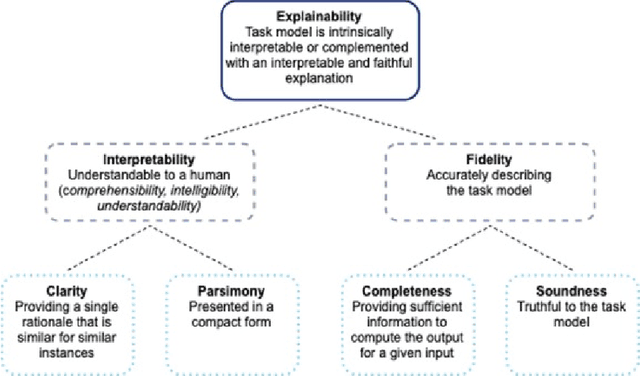

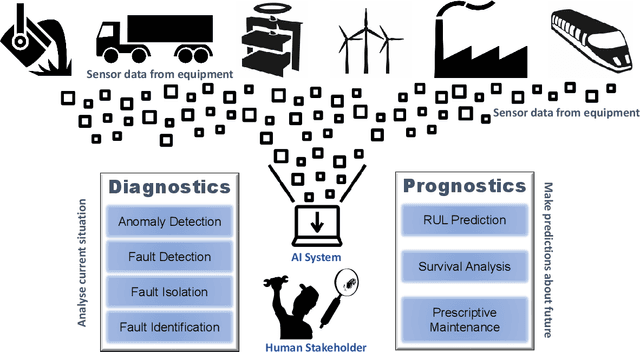
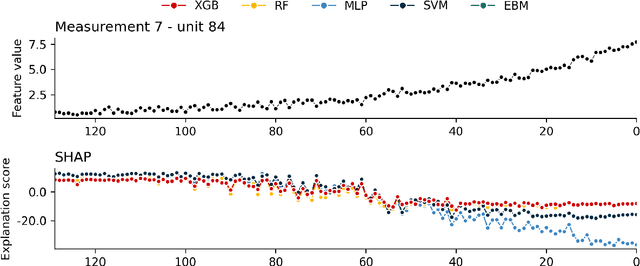
Abstract:Explainable Artificial Intelligence (XAI) fills the role of a critical interface fostering interactions between sophisticated intelligent systems and diverse individuals, including data scientists, domain experts, end-users, and more. It aids in deciphering the intricate internal mechanisms of ``black box'' Machine Learning (ML), rendering the reasons behind their decisions more understandable. However, current research in XAI primarily focuses on two aspects; ways to facilitate user trust, or to debug and refine the ML model. The majority of it falls short of recognising the diverse types of explanations needed in broader contexts, as different users and varied application areas necessitate solutions tailored to their specific needs. One such domain is Predictive Maintenance (PdM), an exploding area of research under the Industry 4.0 \& 5.0 umbrella. This position paper highlights the gap between existing XAI methodologies and the specific requirements for explanations within industrial applications, particularly the Predictive Maintenance field. Despite explainability's crucial role, this subject remains a relatively under-explored area, making this paper a pioneering attempt to bring relevant challenges to the research community's attention. We provide an overview of predictive maintenance tasks and accentuate the need and varying purposes for corresponding explanations. We then list and describe XAI techniques commonly employed in the literature, discussing their suitability for PdM tasks. Finally, to make the ideas and claims more concrete, we demonstrate XAI applied in four specific industrial use cases: commercial vehicles, metro trains, steel plants, and wind farms, spotlighting areas requiring further research.
DeepVATS: Deep Visual Analytics for Time Series
Feb 08, 2023Abstract:The field of Deep Visual Analytics (DVA) has recently arisen from the idea of developing Visual Interactive Systems supported by deep learning techniques, in order to provide them with large-scale data processing capabilities and to unify their implementation across different data modalities and domains of application. In this paper we present DeepVATS, an open-source tool that brings the field of DVA into time series data. DeepVATS trains, in a self-supervised way, a masked time series autoencoder that reconstructs patches of a time series, and projects the knowledge contained in the embeddings of that model in an interactive plot, from which time series patterns and anomalies emerge and can be easily spotted. The tool has been tested on both synthetic and real datasets, and its code is publicly available on https://github.com/vrodriguezf/deepvats
KnAC: an approach for enhancing cluster analysis with background knowledge and explanations
Dec 16, 2021



Abstract:Pattern discovery in multidimensional data sets has been a subject of research since decades. There exists a wide spectrum of clustering algorithms that can be used for that purpose. However, their practical applications share in common the post-clustering phase, which concerns expert-based interpretation and analysis of the obtained results. We argue that this can be a bottleneck of the process, especially in the cases where domain knowledge exists prior to clustering. Such a situation requires not only a proper analysis of automatically discovered clusters, but also a conformance checking with existing knowledge. In this work, we present Knowledge Augmented Clustering (KnAC), which main goal is to confront expert-based labelling with automated clustering for the sake of updating and refining the former. Our solution does not depend on any ready clustering algorithm, nor introduce one. Instead KnAC can serve as an augmentation of an arbitrary clustering algorithm, making the approach robust and model-agnostic. We demonstrate the feasibility of our method on artificially, reproducible examples and on a real life use case scenario.
The BIRAFFE2 Experiment. Study in Bio-Reactions and Faces for Emotion-based Personalization for AI Systems
Jul 29, 2020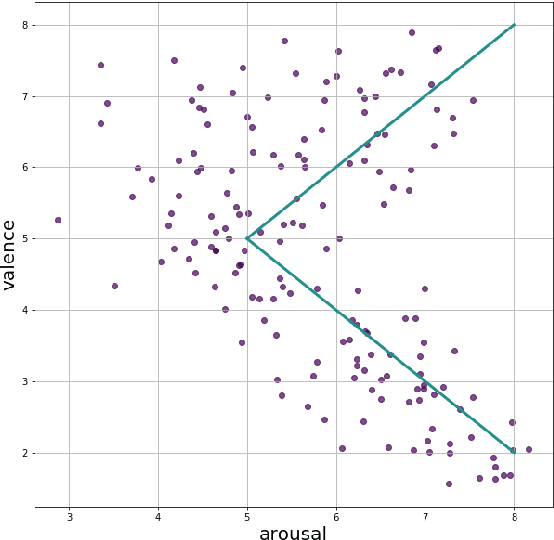
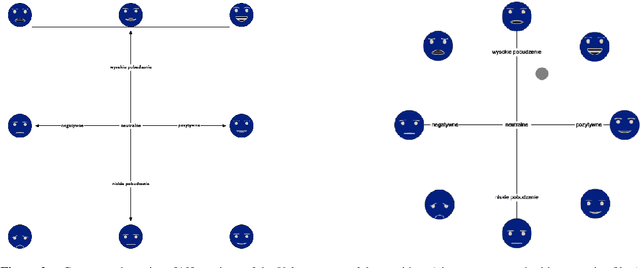
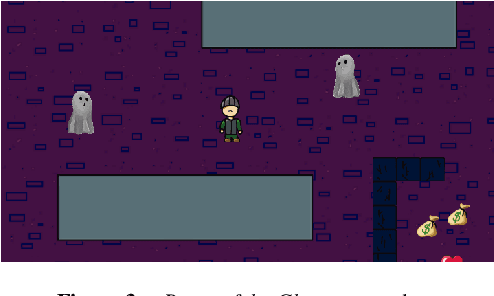
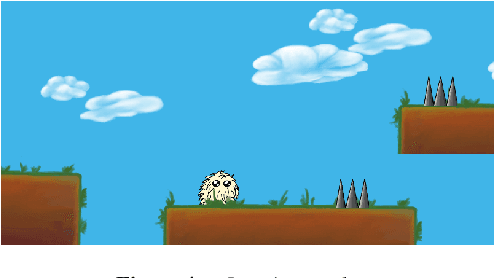
Abstract:The paper describes BIRAFFE2 data set, which is a result of an affective computing experiment conducted between 2019 and 2020, that aimed to develop computer models for classification and recognition of emotion. Such work is important to develop new methods of natural Human-AI interaction. As we believe that models of emotion should be personalized by design, we present an unified paradigm allowing to capture emotional responses of different persons, taking individual personality differences into account. We combine classical psychological paradigms of emotional response collection with the newer approach, based on the observation of the computer game player. By capturing ones psycho-physiological reactions (ECG, EDA signal recording), mimic expressions (facial emotion recognition), subjective valence-arousal balance ratings (widget ratings) and gameplay progression (accelerometer and screencast recording), we provide a framework that can be easily used and developed for the purpose of the machine learning methods.
Generating Local Search Neighborhood with Synthesized Logic Programs
Sep 18, 2019


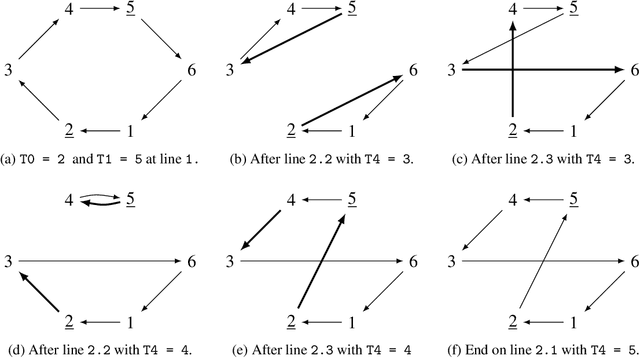
Abstract:Local Search meta-heuristics have been proven a viable approach to solve difficult optimization problems. Their performance depends strongly on the search space landscape, as defined by a cost function and the selected neighborhood operators. In this paper we present a logic programming based framework, named Noodle, designed to generate bespoke Local Search neighborhoods tailored to specific discrete optimization problems. The proposed system consists of a domain specific language, which is inspired by logic programming, as well as a genetic programming solver, based on the grammar evolution algorithm. We complement the description with a preliminary experimental evaluation, where we synthesize efficient neighborhood operators for the traveling salesman problem, some of which reproduce well-known results.
* In Proceedings ICLP 2019, arXiv:1909.07646
 Add to Chrome
Add to Chrome Add to Firefox
Add to Firefox Add to Edge
Add to Edge